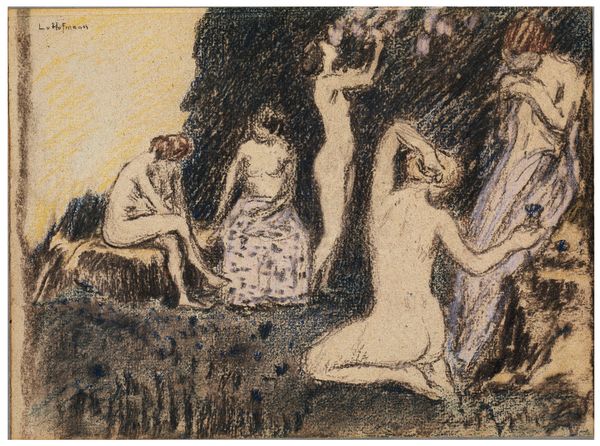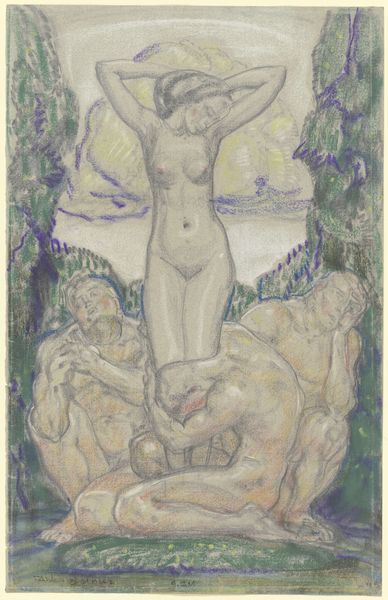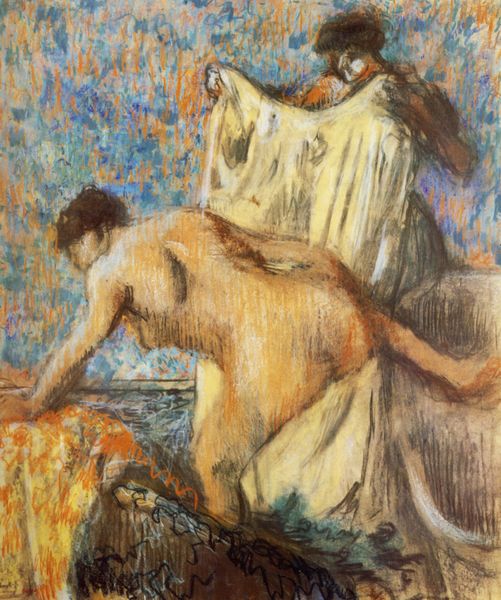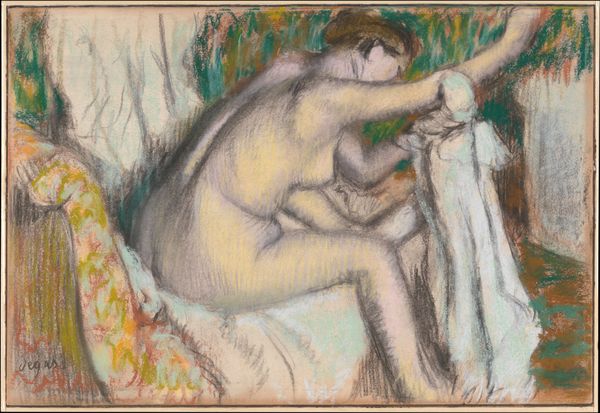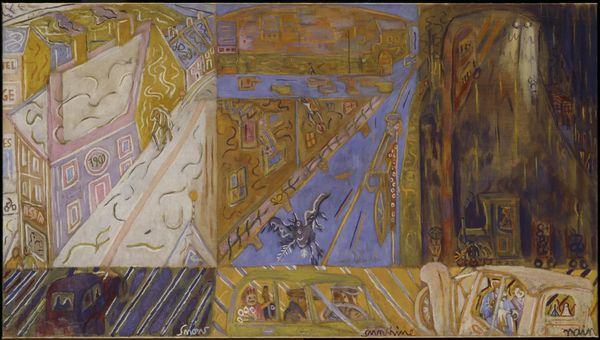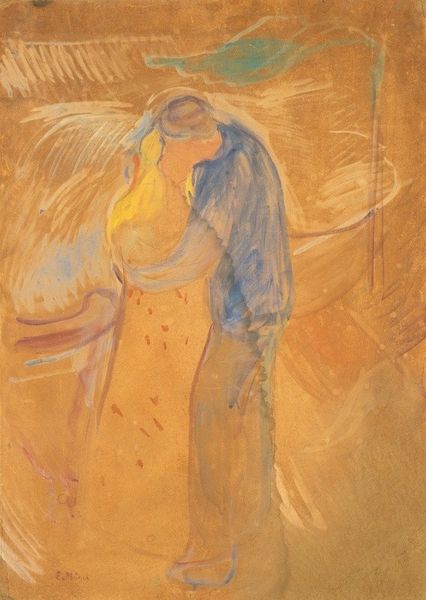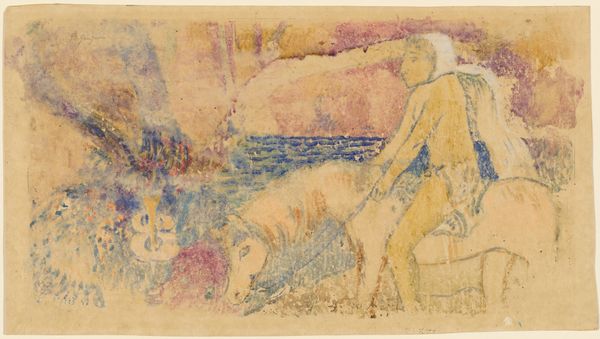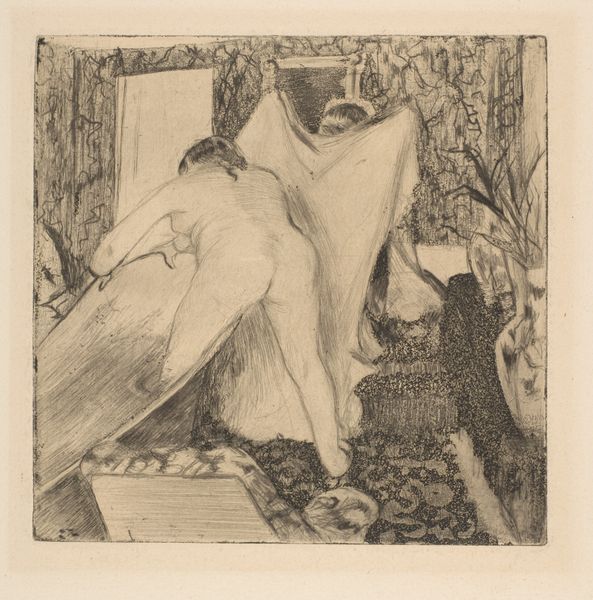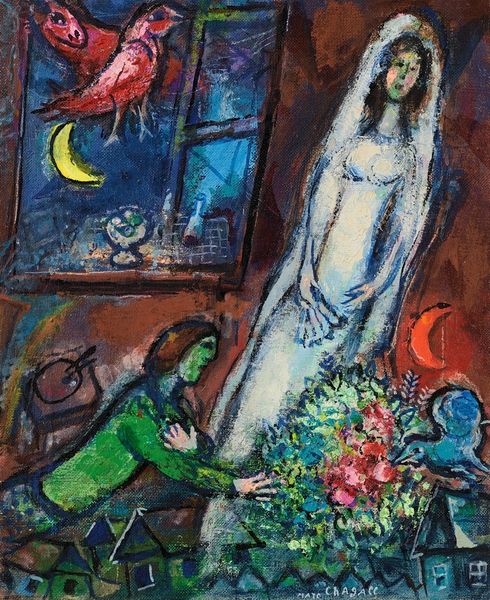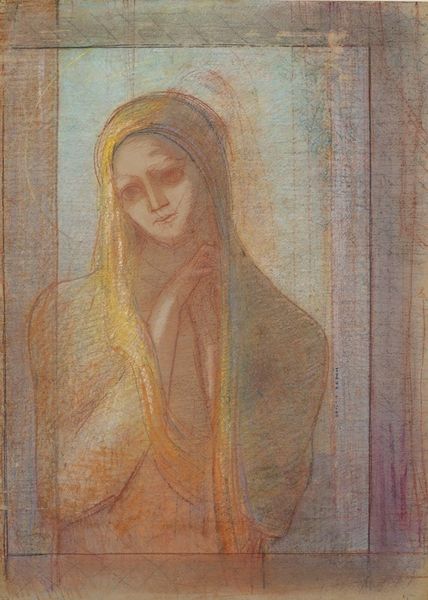
drawing, coloured-pencil
#
portrait
#
drawing
#
coloured-pencil
#
landscape
#
figuration
#
possibly oil pastel
#
oil painting
#
intimism
#
coloured pencil
#
symbolism
#
nude
#
watercolor
Copyright: Public Domain
Curator: Ludwig von Hofmann's "Zwei Frauen und ein Jüngling im Bade," housed here at the Städel Museum, offers an intriguing glimpse into early modern ideals. We believe it was made with colored pencils on paper, though there's a slight ambiguity suggesting perhaps some oil pastel techniques at play too. Editor: Well, my first impression is one of quiet yearning. There’s a beautiful melancholy about the scene; the soft pastel colors lend it a dreamlike, almost ethereal quality. Are they figures from a myth or perhaps simply enjoying a clandestine moment? Curator: Hofmann moved in circles where these themes – nudes in nature, echoes of classical ideals – were actively re-imagined. This ties into the whole life reform movement prominent at the time, promoting healthier lifestyles and a return to nature as a remedy for industrial society. Editor: Exactly, but Hofmann doesn’t romanticize it. There's this pensive atmosphere, even unease, particularly in the standing figure draped in fabric on the left. It looks more like introspection, perhaps a sense of vulnerability exposed in the landscape. What’s your take on the arrangement of these characters, in terms of the visual storytelling here? Curator: Well, positioning figures in a non-theatrical but equally psychologically suggestive way, reminds me of a technique favoured by artists who belonged to the Intimist and Symbolist circles. Editor: It is such a gentle study of longing and humanity – that the Symbolist current you mentioned comes to mind is inevitable. But perhaps it has a quality specific to the time. What did Hofmann want us to reflect on as we watched? Curator: One interpretation is that, by showing figures in a natural setting, he's nudging the viewer to look at themselves, consider their relationship with the environment, and, perhaps more profoundly, reflect on life’s grander questions in a setting divorced from the increasing pressures of the modern age. Editor: Hofmann’s ability to distill such profound feelings into such delicate strokes makes this a special piece indeed. It’s less a representation and more a suggestion, prompting each of us to complete the story with our own vulnerabilities and longings. Curator: It serves as a testament to the power of art of that time and now to provide more than visual enjoyment but philosophical engagement too.
Comments
No comments
Be the first to comment and join the conversation on the ultimate creative platform.
